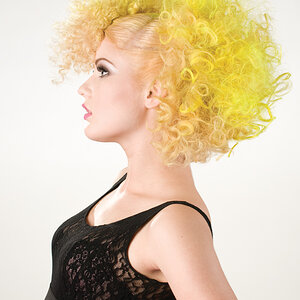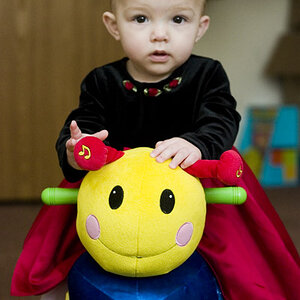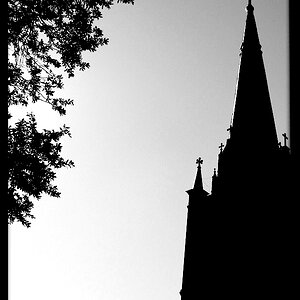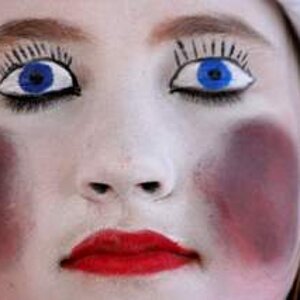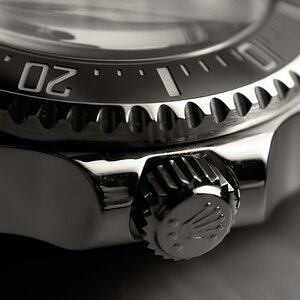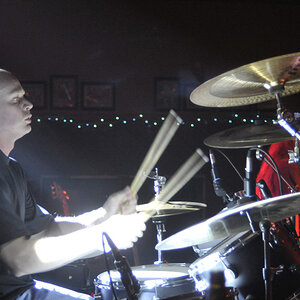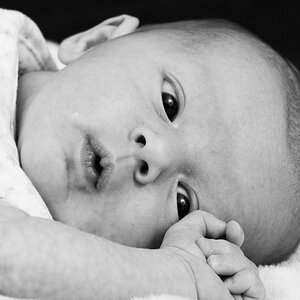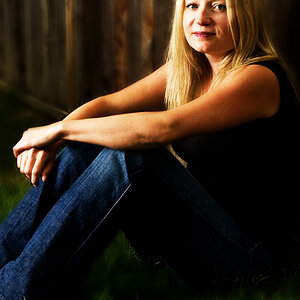Tim Tucker 2
No longer a newbie, moving up!
- Joined
- Jun 8, 2017
- Messages
- 333
- Reaction score
- 241
- Can others edit my Photos
- Photos OK to edit
(And my thoughts on the general state of landscape photography on some forums. ;-) )

Portrait of a room
I’ve just got back from Mull, having only made 3 exposures in five days, and am reminded of some of the thoughts in Robert Adams’ essays on “Beauty in Photography”.
It is not the role of photography to capture or record beauty. In fact it is quite impossible to do so because beauty is a human reaction to what we see and that reaction cannot be contained in the print, it only resides in us. It is the role of the photographer to explain to the viewer why, to reveal its significance.
I failed on Mull. Not because on a rainy, murky, and overcast Mull there was not beauty in abundance, but because I couldn’t find a way of communicating why I found the landscape so beautiful. Sure, I could’ve taken a few pleasing compositions and added a little drama, maybe even the odd storm or two. But that was not what I saw and doing so would’ve only been an admission that beauty couldn’t be made into a photo. What struck me was the subtle and almost elusive play of light/dark as clouds and drizzle thinned and water calmed smooth. It’s almost ironic that the one scene that I did find was indoors when it was the natural landscape I was after.
Another quote from Adams’ essay, though made before the advent of digital, is quite a fair comment today, “…we need only examine a copy of a mass circulation photography magazine. Most of the pictures suggest embarrassing strain; odd angles, extreme lenses, and eccentric darkroom techniques reveal a struggle to substitute shock and technology for sight.”
This is not to say that our goal is to record faithfully, in fact quite the opposite, as the first point to explain why would be impossible. Adams just argues that it should appear effortless, because it is only when it appears to be effortless that we can believe that it’s common in the world around us. The explanation of why we should see beauty often requires great effort and will produce a highly personal view, (and it’s not to say that technique is not important, as with many of the arts making something appear effortless often requires the greatest technique and understanding). In many photographs I see the opposite, they tell me that the photographer found no beauty in what he captured. An admission that the scene itself contained nothing worth communicating other than the photographers ability to choose lenses, filters or move sliders to evoke pre-programmed algorithms.
A portrait without a sitter becomes a still life, it’s depth restricted by a backdrop and lit from the side. It asks us instead to examine the space, sparse, austere, and with little comfort. It is not in the abilities of the camera that beauty resides but in our recognition that it was arranged by human hand. With that simple act of pleasing arrangement it becomes a space we can identify with, a peace, calm and almost warmth accentuated by a simple play of light. We imagine.
Technically it could be better as with the very low levels of light came problems, the shadows in the lower left didn’t even register on my Pentax Spotmeter, the needle didn’t move off the stop. Aligning and focussing through an f8 lens is a challenge when you can’t even accurately define the edges of the frame on the ground glass screen. So there was a lot of educated guessing going on. After hearing me fuss over detail on the print for 10 minutes a friend of mine, who’s artwork I admire, threatened to pin me to the floor and tie my hands behind my back, “leave it alone!” She was right, the peace and calm is the result of the idiosyncrasy of a human hand. It was not measured and laid out by a machine but by the vagaries of human emotion, the best was made of what was there to create a welcoming space where the chance placement can produce a pleasing and unexpected harmony. So although the precision and exactness of a digital photo machine may be able to capture this, does it communicate it to the viewer? If that unexpected harmony by a chance placement creates a human space rather than a machine ordered one then why would that not be true also of the photo? It requires being human to understand human emotion, so a photo that shows the touches of a human hand will communicate a human understanding better than any level of sharpness, noise control or any exact compositional alignment with precise grids. Sometimes you need to leave things to chance, see where some of the dice roll. It’s not always important where they land, just the act of letting them find their own place is all that’s required. Perhaps the secret to that unexpected harmony is in the act of allowing some things to be imprecise, anywhere but clinical precision. Something I find a lot easier with film than digital.
Many seem to forget that we only see the light reflected, and we imagine. It is not that we forget this when we take the image, but we seem to when it is processed. We like to have a narrative of absolutes, we see things, the objects themselves and measure them against the technical abilities of the camera, rather than remembering that the image is only a representation of the light reflected and an emotional response to it. The same is true of much critique, in which we try to force an image to fit into our narrative, our technical framework based on our understanding of cameras.
Red Rock Canyon, a highly saturated image is critiqued for un-realistic colour, but standing in the canyon with the vast rocks reflecting red light everywhere fundamentally changes your impression of the colour you see. Record it accurately and display it in a tiny A3 print against a vast magnolia wall and it will appear quite different.
Many seem to believe that sharper lenses should produce sharper images, but they don’t. They record greater resolution. A lens with greater resolution will record a sharper edge where one is present, but will also record a smoother and softer gradation where that is present. It records texture and detail far better. Sharpness in an image is acutance, the contrast at boundaries, and increasing it changes this contrast, changes the subtle pattern of reflected light.
So what do we do? We could understand how the subtle play of light and colour reflects our mood, of how different a literal translation will look in print and so produce something that reflects our impression and accept it will differ. Or we can rely on our narrative of absolutes, the way we rationalise through the logic of how a camera functions.
The trouble is that if we do the latter then our images become more of a demonstration of the abilities of our cameras than ourselves. Our artistic interpretations are driven by that understanding and are enabled by the automated algorithms of editing programs. We see through the technology of the camera and look for those qualities to stand our photography apart, how it reflects what a good camera can do. But don’t see how we’ve abstracted the image, made it look unreal rather than convince the audience that beauty is real in the landscape because when we look we only seek to confirm what we understand, our own narrative of absolutes.
Light can only exist against dark, the two are ying and yang. Yes, if you stood in the room and let your eyes adjust, (it was quite dark and took a couple of minutes), then you’d probably see more detail in the shadows. So what to do? To maintain the impression of dim light inside the window has to be brighter, the contrast for soft light has to be soft and lower than the window, (boosting sharpness/acutance will give harder light), and to make those mid tones appear as though light is shining on them they have to be contrasted against where light doesn’t fall, the shadows have to be even darker with even less contrast. Raising shadows to reveal detail in objects and repeating with the highlights will place the brightness and contrast of everything closer together, a more even illumination, effectively subtracting the impression of light. Yet we seem to do it without question, this is what the camera recorded it should be shown, thinking in terms of objects rather than the light reflected… With film I find it easier to let everything fall in it’s place, with digital I think the way we rationalise is far too heavily influenced by our understanding of how cameras work, our narrative of absolutes, than it is of our understanding of how humans work, how we see and respond to what we see.
The image presented is the best of the three, the best I took. I couldn’t take a photo that would show you why I found the landscape of Mull full of beauty, but it was and I am determined. I will return and try again, with a little better understanding and a little more experience. ;-)
Tim Tucker.
Portrait of a room
I’ve just got back from Mull, having only made 3 exposures in five days, and am reminded of some of the thoughts in Robert Adams’ essays on “Beauty in Photography”.
It is not the role of photography to capture or record beauty. In fact it is quite impossible to do so because beauty is a human reaction to what we see and that reaction cannot be contained in the print, it only resides in us. It is the role of the photographer to explain to the viewer why, to reveal its significance.
I failed on Mull. Not because on a rainy, murky, and overcast Mull there was not beauty in abundance, but because I couldn’t find a way of communicating why I found the landscape so beautiful. Sure, I could’ve taken a few pleasing compositions and added a little drama, maybe even the odd storm or two. But that was not what I saw and doing so would’ve only been an admission that beauty couldn’t be made into a photo. What struck me was the subtle and almost elusive play of light/dark as clouds and drizzle thinned and water calmed smooth. It’s almost ironic that the one scene that I did find was indoors when it was the natural landscape I was after.
Another quote from Adams’ essay, though made before the advent of digital, is quite a fair comment today, “…we need only examine a copy of a mass circulation photography magazine. Most of the pictures suggest embarrassing strain; odd angles, extreme lenses, and eccentric darkroom techniques reveal a struggle to substitute shock and technology for sight.”
This is not to say that our goal is to record faithfully, in fact quite the opposite, as the first point to explain why would be impossible. Adams just argues that it should appear effortless, because it is only when it appears to be effortless that we can believe that it’s common in the world around us. The explanation of why we should see beauty often requires great effort and will produce a highly personal view, (and it’s not to say that technique is not important, as with many of the arts making something appear effortless often requires the greatest technique and understanding). In many photographs I see the opposite, they tell me that the photographer found no beauty in what he captured. An admission that the scene itself contained nothing worth communicating other than the photographers ability to choose lenses, filters or move sliders to evoke pre-programmed algorithms.
A portrait without a sitter becomes a still life, it’s depth restricted by a backdrop and lit from the side. It asks us instead to examine the space, sparse, austere, and with little comfort. It is not in the abilities of the camera that beauty resides but in our recognition that it was arranged by human hand. With that simple act of pleasing arrangement it becomes a space we can identify with, a peace, calm and almost warmth accentuated by a simple play of light. We imagine.
Technically it could be better as with the very low levels of light came problems, the shadows in the lower left didn’t even register on my Pentax Spotmeter, the needle didn’t move off the stop. Aligning and focussing through an f8 lens is a challenge when you can’t even accurately define the edges of the frame on the ground glass screen. So there was a lot of educated guessing going on. After hearing me fuss over detail on the print for 10 minutes a friend of mine, who’s artwork I admire, threatened to pin me to the floor and tie my hands behind my back, “leave it alone!” She was right, the peace and calm is the result of the idiosyncrasy of a human hand. It was not measured and laid out by a machine but by the vagaries of human emotion, the best was made of what was there to create a welcoming space where the chance placement can produce a pleasing and unexpected harmony. So although the precision and exactness of a digital photo machine may be able to capture this, does it communicate it to the viewer? If that unexpected harmony by a chance placement creates a human space rather than a machine ordered one then why would that not be true also of the photo? It requires being human to understand human emotion, so a photo that shows the touches of a human hand will communicate a human understanding better than any level of sharpness, noise control or any exact compositional alignment with precise grids. Sometimes you need to leave things to chance, see where some of the dice roll. It’s not always important where they land, just the act of letting them find their own place is all that’s required. Perhaps the secret to that unexpected harmony is in the act of allowing some things to be imprecise, anywhere but clinical precision. Something I find a lot easier with film than digital.
Many seem to forget that we only see the light reflected, and we imagine. It is not that we forget this when we take the image, but we seem to when it is processed. We like to have a narrative of absolutes, we see things, the objects themselves and measure them against the technical abilities of the camera, rather than remembering that the image is only a representation of the light reflected and an emotional response to it. The same is true of much critique, in which we try to force an image to fit into our narrative, our technical framework based on our understanding of cameras.
Red Rock Canyon, a highly saturated image is critiqued for un-realistic colour, but standing in the canyon with the vast rocks reflecting red light everywhere fundamentally changes your impression of the colour you see. Record it accurately and display it in a tiny A3 print against a vast magnolia wall and it will appear quite different.
Many seem to believe that sharper lenses should produce sharper images, but they don’t. They record greater resolution. A lens with greater resolution will record a sharper edge where one is present, but will also record a smoother and softer gradation where that is present. It records texture and detail far better. Sharpness in an image is acutance, the contrast at boundaries, and increasing it changes this contrast, changes the subtle pattern of reflected light.
So what do we do? We could understand how the subtle play of light and colour reflects our mood, of how different a literal translation will look in print and so produce something that reflects our impression and accept it will differ. Or we can rely on our narrative of absolutes, the way we rationalise through the logic of how a camera functions.
The trouble is that if we do the latter then our images become more of a demonstration of the abilities of our cameras than ourselves. Our artistic interpretations are driven by that understanding and are enabled by the automated algorithms of editing programs. We see through the technology of the camera and look for those qualities to stand our photography apart, how it reflects what a good camera can do. But don’t see how we’ve abstracted the image, made it look unreal rather than convince the audience that beauty is real in the landscape because when we look we only seek to confirm what we understand, our own narrative of absolutes.
Light can only exist against dark, the two are ying and yang. Yes, if you stood in the room and let your eyes adjust, (it was quite dark and took a couple of minutes), then you’d probably see more detail in the shadows. So what to do? To maintain the impression of dim light inside the window has to be brighter, the contrast for soft light has to be soft and lower than the window, (boosting sharpness/acutance will give harder light), and to make those mid tones appear as though light is shining on them they have to be contrasted against where light doesn’t fall, the shadows have to be even darker with even less contrast. Raising shadows to reveal detail in objects and repeating with the highlights will place the brightness and contrast of everything closer together, a more even illumination, effectively subtracting the impression of light. Yet we seem to do it without question, this is what the camera recorded it should be shown, thinking in terms of objects rather than the light reflected… With film I find it easier to let everything fall in it’s place, with digital I think the way we rationalise is far too heavily influenced by our understanding of how cameras work, our narrative of absolutes, than it is of our understanding of how humans work, how we see and respond to what we see.
The image presented is the best of the three, the best I took. I couldn’t take a photo that would show you why I found the landscape of Mull full of beauty, but it was and I am determined. I will return and try again, with a little better understanding and a little more experience. ;-)
Tim Tucker.


![[No title]](/data/xfmg/thumbnail/40/40309-c759bfd4ae7c079632e7402d21d332f1.jpg?1619739414)
